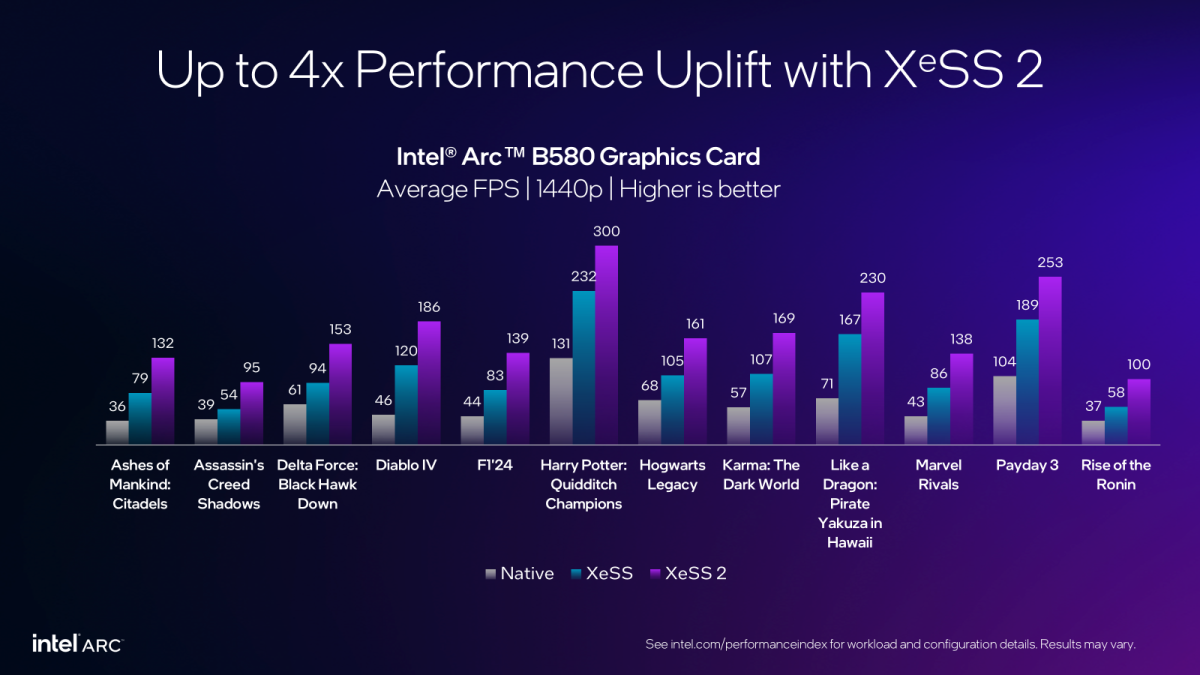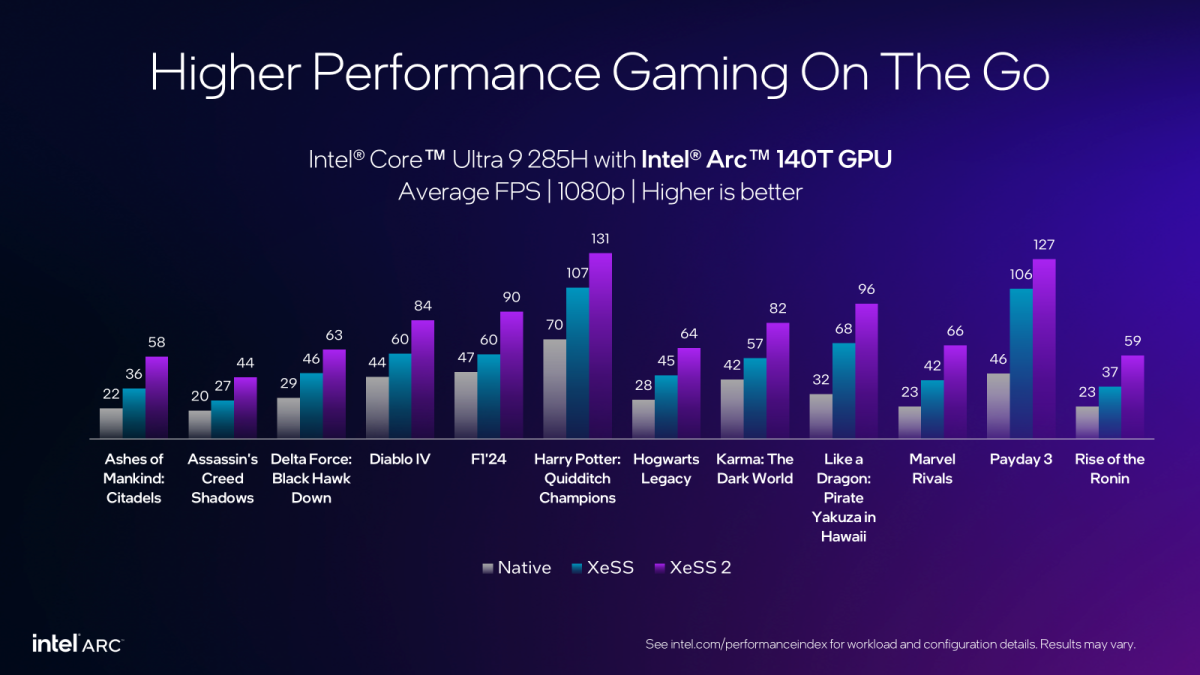Intel said Wednesday that the company is adding its XeSS 2 technology to even more games, including top-tier titles like Diablo IV and Assassin’s Creed Shadows — pushing them into the “definitely playable” category by increasing framerates up to a whopping four times higher. As part of the announcement, Intel also revealed that some sort of XeSS support now exists in over 200 PC games.
XeSS 2 was added in conjunction with the $250 Intel Arc B580 (“Battlemage”) architecture at the end of 2024, a “budget” graphics card that certainly helped alleviate some of the sticker shock that accompanied cards from AMD and especially Nvidia. It combines upscaling, frame generation, and latency in reduction, and doesn’t necessarily require an Intel GPU, either.
The most important thing about XeSS is that it applies additional frames where it’s really needed — at the low end. Increasing a game’s frame rate from 260 fps to 360 fps looks great on paper, but where XeSS shines is pushing a game’s framreate up from below 60 fps, for example, to 90 fps and above. That swaps what could be a bumpy, frustrating experience into something that’s truly fun.
Now, Intel says XeSS 2 has been added to 10 more games for a total of 19, following Intel’s decision to release the XeSS 2 SDK. Today, Intel is releasing estimated gaming performance on games like Marvel Rivals, where XeSS accelerates frame rates from 43 fps (native) to 138 fps using XeSS 2. That’s an enormous bump! Ditto for Rise of the Ronin: pushing frame rates up from 37 fps to 100 fps means an enjoyable, playable game.

Those numbers are for the discrete Arc B580 card, of course. But Intel’s XeSS 2 is equally important in its latest Intel Core Ultra 9 285H processors, too. In my “Arrow Lake-H” review of the MSI Prestige 16 AI Evo (B2HMG), the problem I discovered is that at the time of the review only two games supported XeSS 2 (F1 2024 and Marvel Rivals) limiting the chip’s appeal as a gaming option.
Now, with more games supporting XeSS 2, and hundreds supporting XeSS, you’re seeing a number of games suddenly become playable on the Intel Core Ultra 200 H-series platform.

Intel is also saying that with the XeLL (low latency) technology built into the XeSS 2 technology, display latencies in supported games can drop by about half, improving the overall smoothness of the the game itself.
In all, what you should expect with XeSS and its increased support overall is just a better gaming experience. One of Intel’s strengths has always been in engaging and influencing software developers, so it’s likely that this trend will continue.
Combine that with the $250 Arc B580 — which my colleague Brad Chacos considers the best GPU under $400 — and Intel’s progress in notebook CPUs, even low-end hardware is gaining the ability to play today’s top-tier games.
Войдите, чтобы добавить комментарий
Другие сообщения в этой группе

Hey, PCWorlders! Here’s a little browser trick I learned from an arti

A great USB flash drive should check all the boxes you’re looking for

Ring is bringing generative AI to its family of home security cameras


If you’re still using an older model monitor, it’s high time you upgr

Still struggling with poor video quality? We all have those precious

On the first day after your vacation, you sit down at your PC, type i
